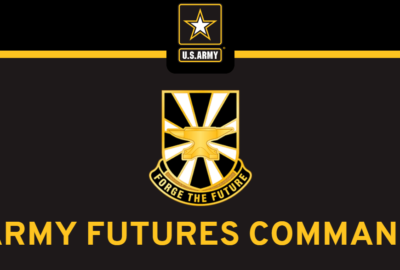The Army is joining the Navy in asking for a bigger slice of future military budgets, even as it seems like the topline number for defense spending isn’t likely to get much larger in the coming years.
The 2021 defense budget request remains relatively flat compared to 2020 — a drastic change from the last four years of growth. However, the Army is expecting some of its recent modernization and technological advancement efforts to come to maturation, which it says will translate to the need for more money — specifically a 3% to 5% growth in purchasing power in the future.
The Army took about a 1% hit in purchasing power from the 2021 budget request, according to Lt. Gen. Thomas Horlander, military deputy to the Army comptroller.
“In total, the Army budget is about $178 billion, about $2.2 billion less than last year,” Horlander said during an Association of the United States Army event in Arlington on Tuesday. “There’s a balance here because there is a pretty sizeable reduction in overseas contingency operations (OCO) spending, but there is growth in the base.”
OCO is a fund that was created to pay for the wars in Iraq and Afghanistan, but has more recently been used as a way to stuff money into the defense budget without hitting the budget caps imposed by the Budget Control Act.
Over the past two years the Army shifted its focus further toward near-peer competition with countries like China and Russia, keeping a technological edge over them and modernizing weapons.
To do that, it’s invested in what it calls the “Big Six” priorities in science and technology: long-range precision fires, next-generation combat vehicle, future vertical lift, air-and-missile defense, soldier lethality and the network. There’s a few other investments it’s also been funding that it deems important, like artificial intelligence.
Those technologies are getting about $60 billion from 2020 to 2024.
“I think you’re going to see some big investments in some of the things that we’ve worked on for the last few years,” Horlander said. “Huge increases in hypersonics, the integrated visual augmentation system. We are starting to see the migration of funds from the science and technology piece into research and development. That’s exactly what we would have expected.”
That also means that those programs are going to get larger and need more funds to go into production as they go from prototypes to actual weapons.
Therein lies the Army’s need for more purchasing power.
Budget demands
Horlander said about half of the Army’s budget is going to its people. That’s for things like benefits and salaries, and for the 3.1% raise soldiers will get in 2020, and the proposed 3% increase for 2021.
The Army is also supposed to grow by about 2,000 active-duty soldiers, moving the end strength from about 484,000 to 486,000. That’s more demand on the Army’s budget.
Horlander said the Army’s ability to cut from inside for more funds is starting to lose its luster. The Army’s Night Court did a full review of all its programs and cut or canceled more than 200.
That’s partly how it paid for the reprioritization to the Big Six. The process found more than $30 billion over the next 5 years by canceling legacy programs and duplicative services.
But, Horlander said the low-hanging fruit is gone, and further Night Courts will not be as productive.
That means the Army either needs to ask for more money from the total defense budget, or convince a Congress that has already ponied up four years of increased budgets for higher future toplines.
That proves more difficult because the Army needs to compete with a Navy that says it needs more money too.
Last month, Chief of Naval Operations Adm. Michael Gilday said the new Columbia-class ballistic submarines are taking up too much of the service’s budget as it continues to try to build its fleet to 355 ships.
“Here’s the deal, we need more money,” Gilday said. “We need more topline.”
Copyright
© 2024 Federal News Network. All rights reserved. This website is not intended for users located within the European Economic Area.
